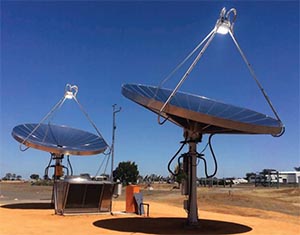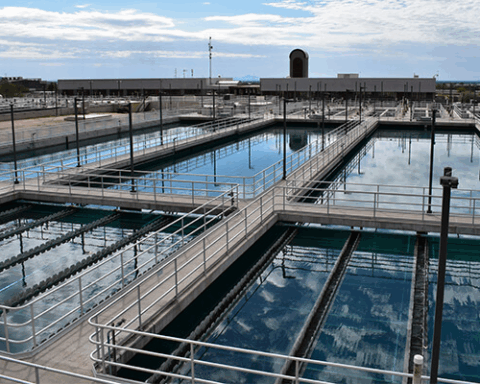The U.S. Department of Energy (DOE) is turning up the heat on industrial decarbonization, announcing $33 million in funding for nine projects across seven states. This cash infusion will help reduce the emissions from industrial sources and pilot the implementation of concentrating solar-thermal (CST) technologies, focusing on solar fuel production and long-duration energy storage.
“DOE continues to invest in the next-generation solar technologies we need to tackle the climate crisis and ensure American scientific innovation remains the envy of the world,” U.S. Secretary of Energy Jennifer Granholm said in a press release. “With today’s announcement, DOE is supporting projects that will harness the sun’s energy to power NASA space missions, beer and wine production, and everything in between.”
The financial boost comes as the U.S. is moving through a high-stakes clean energy transition. With the nation racing toward climate goals, many industrial processes cannot easily be converted to clean energy sources. CST technologies offer a potential solution to fill a critical gap in decarbonizing high-heat industrial processes and providing the long-duration energy storage needed to keep renewable energy flowing. Although it shows promise to play a key role in the energy transition, CST technology has not been widely employed, but with help from DOE funding, projects across the country could soon demonstrate its capabilities.
CST — and closely related CSP for concentrating solar-thermal power — involves using a large number of mirrors to redirect sunlight onto a fixed area. The heat from the sun is so strong that the area becomes hot enough to produce steam or kickstart a chemical reaction. CSP refers to when the technology is used to generate electricity. But the heat can also be used in various industrial processes or stored like a battery.
The funding is part of the Solar-thermal Fuels and Thermal Energy Storage Via Concentrated Solar-thermal Energy program at the DOE’s Solar Energy Technologies office. The $33 million investment is split between two main areas: Solar-Thermal Fuel Production and Concentrating Solar-Thermal Energy Storage.
In the Solar-Thermal Fuel Production category, West Virginia University received $5 million. Its project, in partnership with NASA, demonstrates how solar-thermal energy can be integrated with hydrogen production, potentially creating a technology that could produce hydrogen and oxygen in space.
Meanwhile, the National Renewable Energy Laboratory in Colorado is also looking to use the sun’s heat to fuel chemical reactions with its $3 million award. Researchers are developing a novel reactor that could turn carbon monoxide and water vapor into high-value products like jet fuel, potentially lowering the aviation industry’s carbon footprint.
On the energy storage front, California is leading the way with two large projects. Firestone Walker Inc. in California received the largest sum with a $7.3 million award. Their project involves concentrating solar-thermal energy to generate steam for its brewery operations, potentially eliminating a staggering 3,000 tons of carbon dioxide emissions annually. Premier Resource Management has received a $6 million award. They’re developing a 100-kilowatt electric demonstration power plant that stores thermal heat underground at retired fracking sites. It’s a project that could give new, clean life to old fossil fuel infrastructure.
Photo by Patrick550













